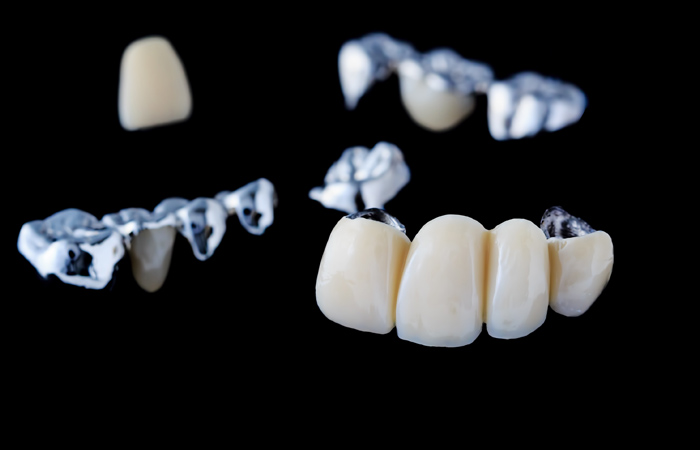Dental Bridges
It can be a scary experience when you lose a tooth unexpectedly. You may be unsure about your options or how visiting your dentist can help the situation. However, there are multiple options to remedy a missing tooth or teeth, one being the placement of dental bridges. Dental bridges are created to bridge the gap between one or multiple missing teeth. This involves two or more “anchoring teeth” secured to the teeth surrounding the gap, and a false tooth (or teeth) to replace the gap(s). This is a minimally invasive procedure and can really enhance the comfort of the patient. Dental bridges look completely natural despite being composed of materials such as gold, porcelain, alloys or a combination of these materials.
What is the Process of Getting Dental Bridges?
During your first visit, your dentist will prepare for the abutment teeth. This involves recontouring the surrounding teeth to make room for the crowns to be placed over them. An impression of the teeth is created, serving as a model for the creation of the bridge, pontic, and crown made in a dental lab. A temporary bridge will be made to ensure the exposed teeth and gums are protected while the bridge is being created.
On the second visit, the temporary bridge is removed, and the new bridge is placed in the patient’s mouth. Adjustments may be required to ensure the bridge fits properly. The process of receiving a dental bridge may require multiple visits depending on each case. Your dentist may use temporary cement to keep it in place for a few weeks to ensure it fits properly. After a few weeks, your dentist will then cement the bridge into place.

Benefits
There are plenty of benefits that dental bridges offer to patients suffering with a missing tooth or teeth. We have listed just a few below:
- They replace your missing teeth.
- They restore the function of your teeth like chewing and speaking properly.
- They prevent your remaining teeth from shifting which can affect your bite.
- They reduce the risk of bone loss thus maintaining the structures of your face.
- The bridges are permanently fixed, which prevents it from moving the way dentures do.

Caring for Dental Bridges
Taking care of your dental bridge comes involves maintaining the oral hygiene of your remaining teeth. You must brush and floss your teeth twice per day, make regular visits to your dental clinic, and maintain a proper diet. This will help maintain the integrity of your dental bridge, ensuring that your false tooth, as well as the crowns on each side of your bridge, are protected.
If you find yourself in a situation where you have lost a tooth, a dental bridge is a great way to go. There are plenty of benefits to this fairly easy procedure, without requiring significant care or recovery time post procedure.